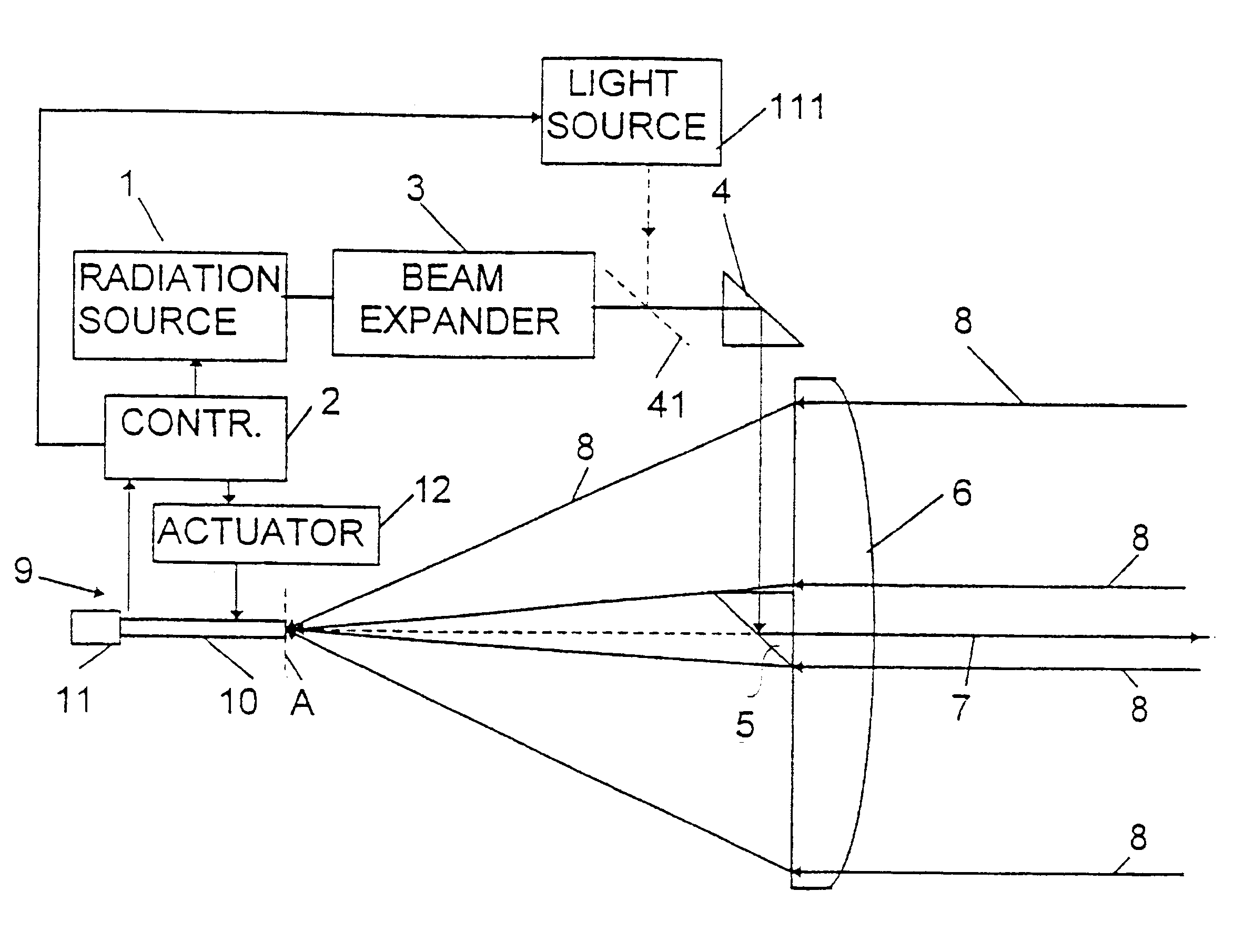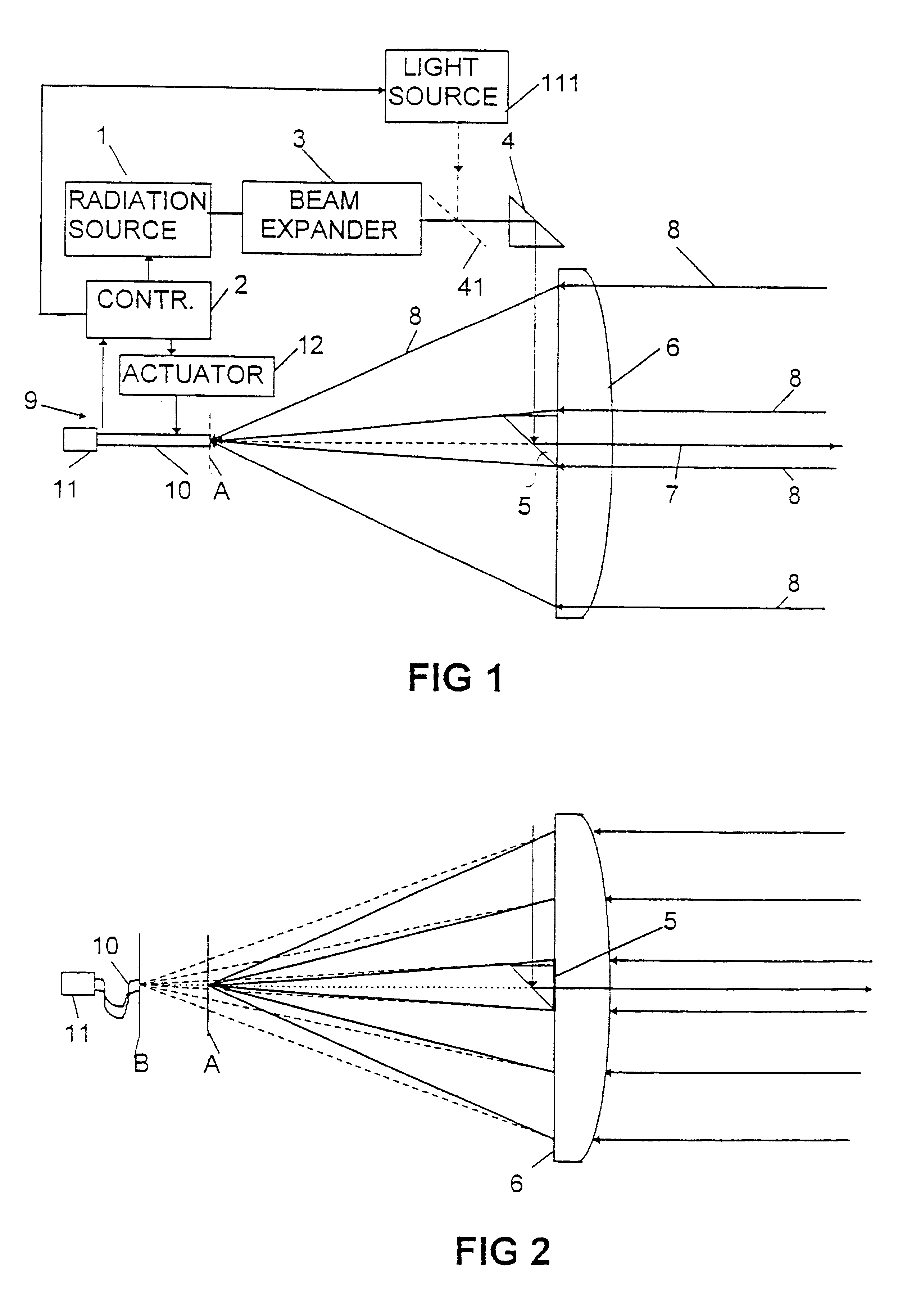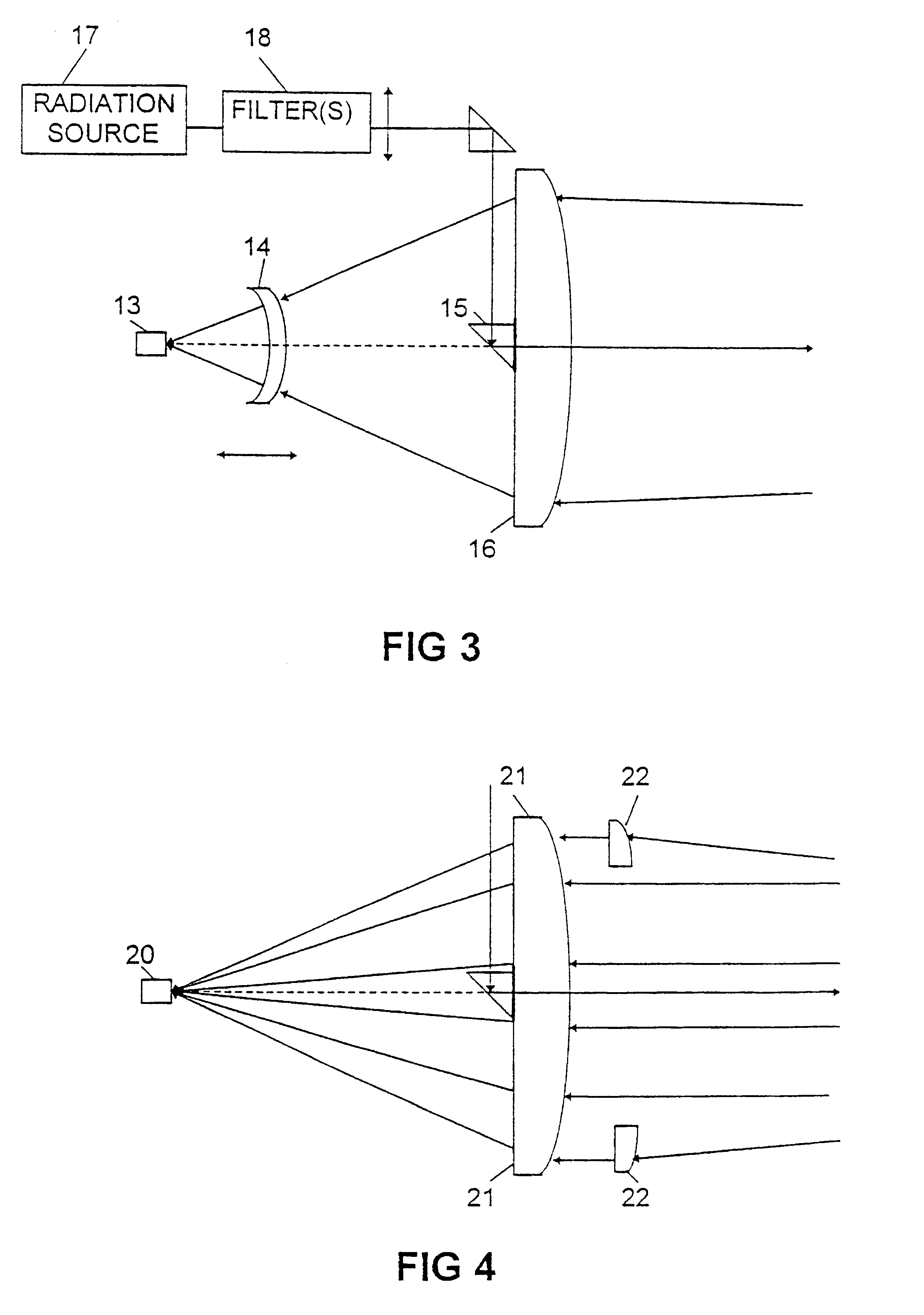Electronic distance measuring device
a technology of electronic distance measurement and measuring device, which is applied in the direction of distance measurement, instruments, surveying and navigation, etc., can solve the problems of inability to control the exact time of emitted light pulses, short range, and a problem of passive q-switching
- Summary
- Abstract
- Description
- Claims
- Application Information
AI Technical Summary
Benefits of technology
Problems solved by technology
Method used
Image
Examples
second embodiment
In the second embodiment shown in FIG. 3 the detector unit 13 is immovably fixed, and a lens 14 (or a lens system) is movably positioned, manually or automatically, between the objective lens 16 and the detector unit 13 in order to create an adjustable focal distance. The detector can always be positioned in focus in this way. (It is to be noted that a movable lens instead could be positioned outside the objective lens 16 in the position shown in FIG. 4.) The detector unit 13 could also in this embodiment.comprise a detector element having an optical fibre in front of it as in the embodiment in FIG. 1 (not shown).
In the embodiment shown in FIG. 3 the light source 17 could be a microchip laser emitting IR radiation and having a beam expander (not shown in this embodiment). The light source is in this embodiment provided with a frequency doubling crystal to transform the laser light into visible light. The doubling efficiency is not very high. Both IR radiation and visible radiation w...
third embodiment
In the third embodiment, shown in FIG. 4, which only shows the optical elements, the detector unit 20 is also fixedly mounted in relation to the objective lens 21. An optical element 22 is designed such that the part of the beam passing through it and the lens 21 is deviated with a different focal length than the part that passes only through the lens 21. The focal length of the double system 21, 22 is adapted to nearby objects. By suitable optimisation of the focal lengths and dimension of the element 22, and by using the aberrations in the optical system it is possible to obtain a high enough signal at the detector / detector fibre within a chosen object distance interval. It is to be noted that instead of having the extra optical element outside the objective lens 21 it could be seated inside this lens for example in the position shown for the lens 14 in FIG. 3.
The optical element 22 is preferably ring shaped, but in principle other shapes are possible, like for example a segment o...
PUM
 Login to View More
Login to View More Abstract
Description
Claims
Application Information
 Login to View More
Login to View More - R&D
- Intellectual Property
- Life Sciences
- Materials
- Tech Scout
- Unparalleled Data Quality
- Higher Quality Content
- 60% Fewer Hallucinations
Browse by: Latest US Patents, China's latest patents, Technical Efficacy Thesaurus, Application Domain, Technology Topic, Popular Technical Reports.
© 2025 PatSnap. All rights reserved.Legal|Privacy policy|Modern Slavery Act Transparency Statement|Sitemap|About US| Contact US: help@patsnap.com



